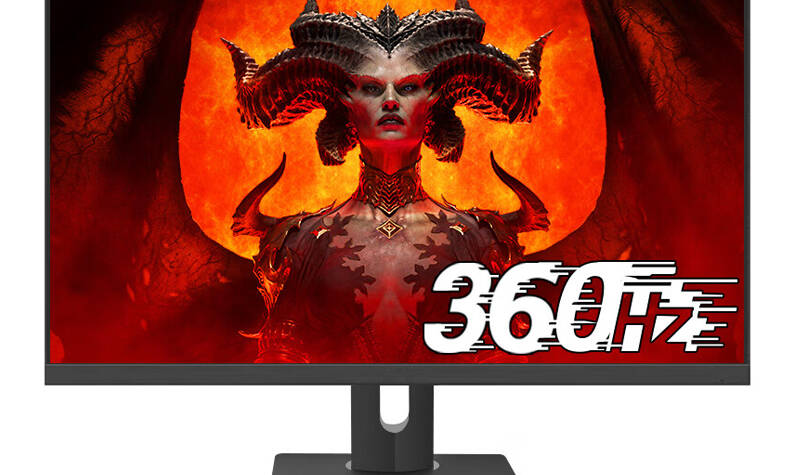
A 360Hz gaming monitor offers one of the fastest refresh rates currently available, delivering exceptionally smooth motion and reduced blur in fast-paced games. This high refresh rate can provide a competitive edge for gamers who prioritize fluid visuals and quicker reaction times.
The main benefit of a 360Hz monitor is its ability to show up to 360 frames per second, making gameplay noticeably smoother compared to lower refresh rates like 60Hz or 144Hz. This can enhance responsiveness and clarity, especially in first-person shooters and racing games.
While not all games or systems can fully utilize a 360Hz display, those with powerful hardware and fast-paced gaming styles may find it worthwhile. Understanding when and how this technology impacts visual performance is key to deciding if it fits a gaming setup.
Key Features of 360Hz Gaming Monitors
360Hz gaming monitors offer advantages in smoothness, responsiveness, and visual clarity. Specific technologies and performance metrics define their impact on gameplay, input handling, and image quality.
Refresh Rate Impact on Gaming Experience
A 360Hz refresh rate means the display updates 360 times per second, significantly more than standard 60Hz or even 144Hz monitors. This higher frequency reduces motion blur and makes fast-paced actions appear smoother.
Competitive gamers benefit most, as the increased refresh rate allows for quicker reaction times. However, to fully utilize 360Hz, the graphics card and game must support very high frame rates. Without matching frame output, the advantage diminishes.
This refresh rate primarily enhances fast-twitch game genres like first-person shooters and racing games, where milliseconds influence performance.
Response Time and Input Lag
Response time describes how quickly a pixel changes from one color to another, often measured in milliseconds (ms). 360Hz monitors usually feature ultra-fast response times, often around 1ms, to keep visual transitions crisp without ghosting.
Input lag measures the delay between a user’s action and its appearance on screen. Lower input lag results in a more immediate feel during gameplay, critical for precision and timing.
Manufacturers optimize both response times and input lag to ensure the rapid refresh rate delivers practical advantages, not just theoretical benefits.
Panel Technologies in 360Hz Displays
Most 360Hz monitors use TN (Twisted Nematic) or IPS (In-Plane Switching) panels. TN panels typically offer faster response times and lower input lag but have narrower viewing angles and less accurate colors.
IPS panels provide better color reproduction and wider viewing angles but may slightly lag behind TN in response speed. Recent advancements have improved IPS response times closer to TN levels.
Some models might use OLED or other advanced panels, but TN and IPS remain dominant in 360Hz gaming monitors due to their balance of speed and image quality.
Adaptive Sync and G-SYNC Compatibility
Adaptive Sync technology synchronizes the monitor’s refresh rate with GPU frame output, reducing screen tearing and stuttering. Common implementations include AMD FreeSync and NVIDIA G-SYNC.
360Hz monitors often support one or both technologies to maintain smooth gameplay, especially when frame rates fluctuate below the maximum refresh rate.
G-SYNC certification ensures compatibility and optimized performance with NVIDIA graphics cards, while FreeSync targets AMD GPUs. Some monitors offer universal support, switching between sync methods depending on the GPU used.
This compatibility is important to maximize frame synchronization and minimize visual artifacts during fast gaming sessions.
Choosing the Right 360Hz Gaming Monitor
Selecting a 360Hz monitor requires careful attention to display clarity, size, and the options for connecting multiple devices. Additionally, the physical setup and adjustability impact comfort during extended gaming sessions.
Resolution and Screen Size Considerations
360Hz monitors often come in 1080p resolution, which balances high refresh rates and response times with clear visuals. Higher resolutions like 1440p are less common at 360Hz due to the increased processing demand.
Screen sizes typically range from 24 to 27 inches, with 24-inch screens favored for closer desk setups and quicker eye movement across the screen. Selecting a size beyond 27 inches may reduce the benefits of ultra-fast refresh rates because pixel density and viewing distance become factors.
Gamers should prioritize a size and resolution combination that supports smooth gameplay without sacrificing sharpness or causing eye strain.
Connectivity and Ports
A 360Hz display requires specific connection standards to maintain the high refresh rate. DisplayPort 1.4 or newer is the most common port supporting 360Hz at 1080p. HDMI often does not deliver 360Hz at that resolution reliably.
Multiple ports are ideal to connect consoles, PCs, and peripherals simultaneously without swapping cables. USB hubs integrated into the monitor add convenience for peripherals like headsets or keyboards.
Checking for adaptive sync support (G-Sync or FreeSync) is essential, as this helps prevent screen tearing and stuttering, especially in fast-paced games.
Ergonomics and Design Features
Adjustability is important for comfort during long gaming sessions. Features like height adjustment, swivel, tilt, and pivot help customize the setup to reduce neck and eye strain.
A monitor with a matte anti-glare coating improves visibility under different lighting conditions. Reduced reflection helps maintain clarity without needing to adjust room lighting constantly.
Some 360Hz monitors also include built-in blue light filters and flicker-free technology to reduce eye fatigue. Design elements such as minimal bezels allow easy multi-monitor setups.
Best SEO Company for Driving Results and Maximizing Online Growth
Choosing the best SEO company means finding one that delivers measurable results, improves…







